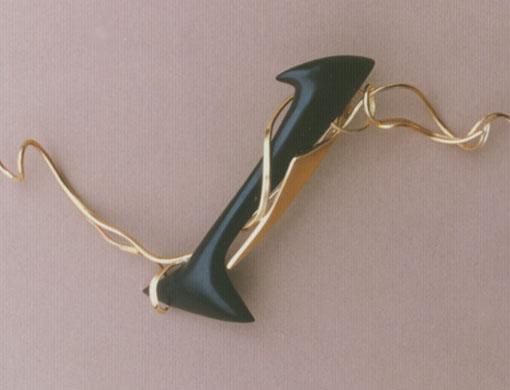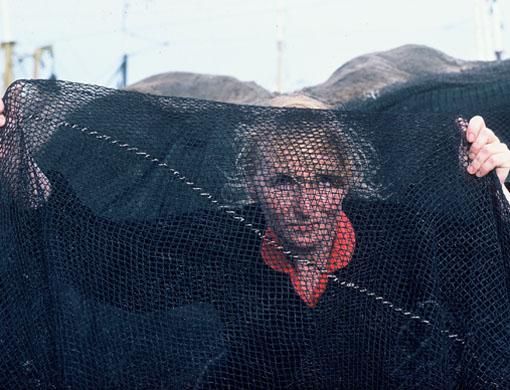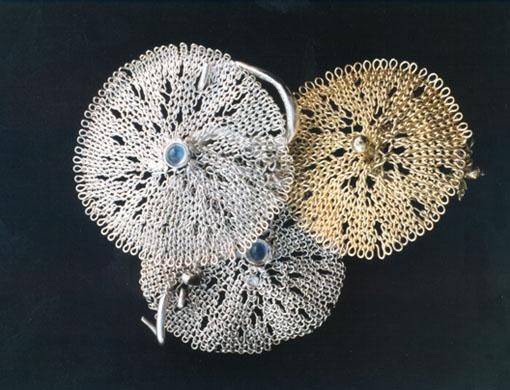She could pass for a grandmother, sitting on a rocking chair, knitting booties and dispensing invaluable advice.
But don't be fooled by Erika Leitner's old-fashioned air. Instead of wool, give her a block of silver and watch her transform it into wire as fine as gossamer and then weave it into prize-winning jewellery pieces.
Awestruck audience
“I needed delicate silverware in Kuwait and it was not available. So I bought a block of silver and took it to the metal market.
The Pakistani steel worker there could not understand me. Nor was he used to reducing it to such delicate proportions.
So I asked him to step aside and proceeded to roll and reroll the metal, later cutting it to my requirements.
And when I turned around, I found I had quite an audience — Pathans had gathered around, amazed at a woman working on metal,'' Leitner recounted. Leitner transforms gold, silver and copper to delicate wire and then weaves it — much like knitting or textiles — into fashion jewellery.
She has invented this method and perfected it to such a degree that she now tours the world, holding workshops at universities so art students can learn the art.
Exquisite earrings, bracelets, necklaces and more are sold in high-end fashion boutiques.
But Leitner does not limit herself to adornments for fashionistas. She makes statues and sculptures too.
“I have made an undulating, skirt-like structure for a tree in my garden,'' she said. “It had shed all its leaves and needed protection.
Now the leaves have begun growing back but the metal skirt looked so pretty and so many people dropped in to admire it that we decided to keep it!''
Career of dreams
Apart from solo and joint exhibitions, she has been invited as visiting artist to demonstrate and teach at universities from Australia to the US.
“My life has been a miracle,'' she said. “I have been very fortunate in my career,'' Leitner said.
Born in Austria during the Second World War, she studied art and later married a professor of mathematics.
“My husband has always encouraged me to pursue my interest.
We lived in New York for a few years, where my work caught the attention of a famous designer, Noma Copley, and I began making pieces for her.
She even told my husband I should concentrate more on jewellery than on housework!
“One of the highlights of this period was representing my country at the Montreal World Fair,'' Leitner said.
A different life
“I have four kids and I did not want them to forget their roots, so we went back to Vienna for a few years.
But we then moved to Africa and lived in Lusaka, so they could see another kind of life.
“I also had to learn a great deal. There were no tools for me and I had to adapt.
This led to my inventing and developing my method: textile techniques in metal.
I learnt how to bend and twist wires with just nails and pliers, making sure the metal did not break,'' she explained.
Later, when Leitner's husband took up a job in IBM, the family moved to Brussels, where she had her exhibition of artistic pieces at the Palais Des Beaux Artes.
As she was always interested in the Middle Eastern culture, he requested a posting to the region and in 1985, the family shifted to Kuwait.
It was here that, unable to buy the gold or silver wire she required, she ventured into a small Pakistani workshop in a souk and did an impromptu demonstration for a spellbound audience!
Technique ticket
Leitner also began teaching the technique to small groups and was soon inundated with requests from universities to hold workshops.
She met Salome Al Sabah, who came in as a pupil and is introducing Leitner's art pieces to Dubai. She has also been teaching in the Art College in Sydney.
“I have just gone with the flow,'' she said. “And with my husband's strong support, I have turned a hobby into a recognised technique.
— Nirmal Khanna is a UAE-based freelance writer
Fame knit in slver
Erika Leitner has made a name for herself perfecting the basics















